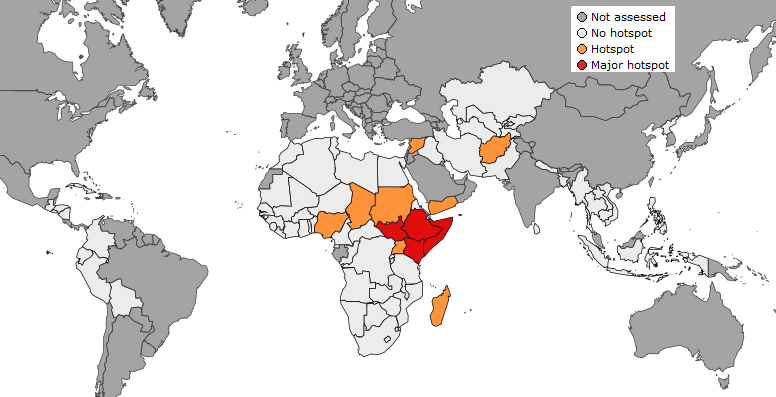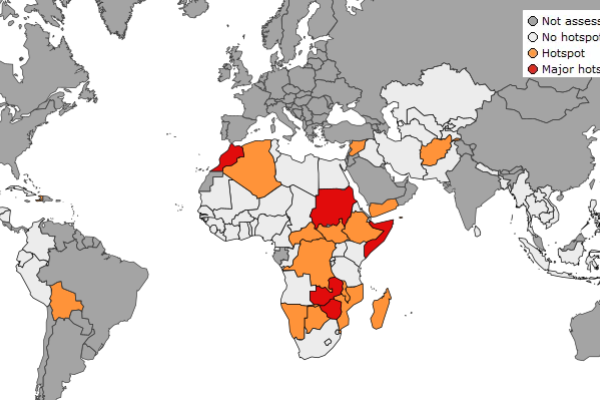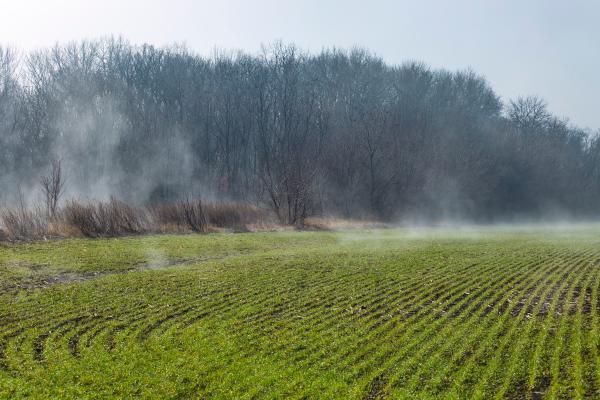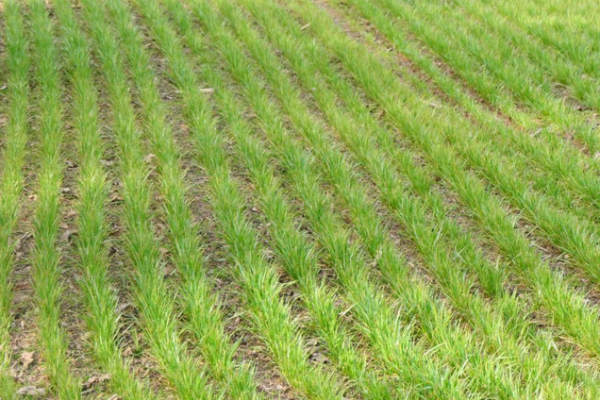
Main findings of the November global overview:
- In Southern Africa, generally favourable weather conditions are benefiting early vegetative stages of summer cereal crops. Below-average biomass conditions are observed in central and southern Angola and in northern Zambia. Although early in the season, the situation should be closely monitored.
- In East Africa, production prospects in the main production areas of the northern part of the region are generally favourable, except for areas affected by floods and dry spells. Second season crops in marginal areas and rangelands in southern Ethiopia, Somalia and northern and eastern Kenya are facing the fifth consecutive drought season, which is likely to lead to widespread crop failure and livestock death as well as long-term degradation of productive assets. According to the IPC, over 47 million people are experiencing high levels of acute food insecurity (IPC Phase 3 or above). Continued and scaled-up humanitarian assistance is needed in the region to address this unprecedented emergency.
- In North Africa and the Middle East, sowing of winter crops is taking place under generally drier-than-average conditions. For North Africa, the Copernicus C3S Multimodel seasonal rainfall forecasts point to a high likeliness of above-average December and January rainfall. In Yemen, prospects are favourable for recently harvested wheat and sorghum; however, food insecurity continues to affect 17 million (out of 30 million) people as a result of the conflict and the poor socioeconomic conditions.
- In West and Central Africa, the main season is complete and cereal production is forecast at 76.4 million tonnes, 6% above the 5-year average (FAO-Crop Prospects and Food Situation, December 2022). Harvesting of second season crops is underway in southern bimodal areas and production prospects are favourable.
- In Central Asia, sowing of winter cereals concluded under above-average rainfall conditions. In Afghanistan, food insecurity remains very high, with one out of two people in acute food insecurity. In South Asia, harvest of kharif crops and aman rice is underway with good prospects, except in Sindh and Balochistan (in southern Pakistan) and Sylhet (in north-eastern Bangladesh). Plantings of main season rice and maize in Sri Lanka concluded under favourable weather conditions and with a government promise of sufficient fertiliser.
- In continental South-East Asia and the Philippines, the wet season rice harvest is ongoing with favourable prospects, except in areas of Cambodia and Thailand affected by floods. In Indonesia, prospects are also favourable for the ongoing harvest of dry season rice. In North Korea, winter wheat and barley have been sown in October-November under close-to-average conditions.
- In Central America, harvest of main (primera) maize has concluded and cereal production in the region is forecast at a near-average level. Planting of third season maize and beans commenced in Honduras and Nicaragua under favourable conditions. Sowing of the next cycle of maize and rice started in the Caribbean under slightly below-average cumulative rainfall. A slight improvement in food security can be expected in the region, as primera production is at average levels and there is increased economic activity. However, high food and fuel prices and general high inflation will continue to constrain household purchasing power.
The next assessment is scheduled for the end of January 2023.
Details
- Publication date
- 19 December 2022
- Author
- Joint Research Centre
- JRC portfolios




